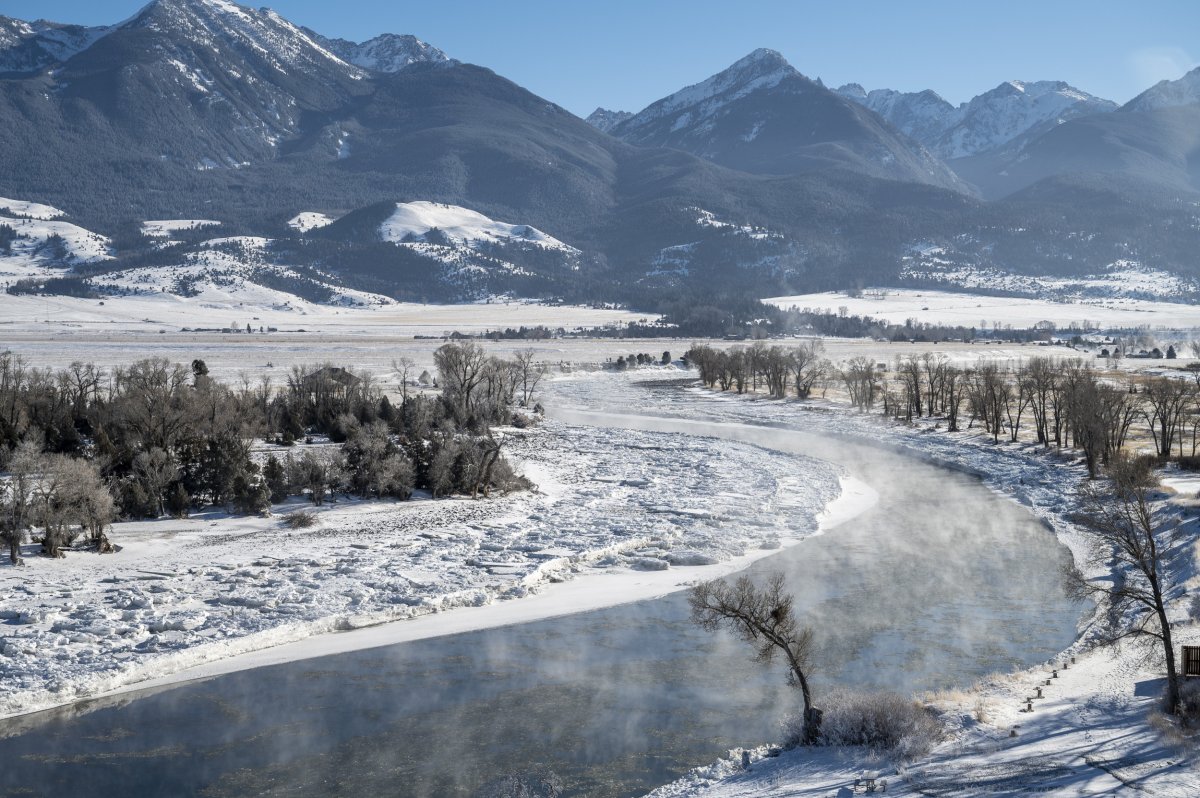The Flathead Avalanche Center has issued an urgent special avalanche bulletin, warning of hazardous conditions in the Swan, Whitefish, and Flathead Ranges, including Glacier National Park. The advisory, which was issued at 6:00 a.m. on February 1st, will remain in effect until 6:00 a.m. on February 3rd. Backcountry travelers in these areas are urged to exercise extreme caution as avalanche conditions have escalated to dangerous levels.
What’s Happening?
New and wind-drifted snow has recently fallen in the area, creating unstable conditions on top of a weak snowpack. This combination has led to significantly higher risks for anyone planning to venture into the backcountry. The Flathead Avalanche Center warns that this scenario greatly increases the likelihood of triggering slab avalanches, which are large enough to potentially bury, injure, or even kill those caught in them.
Additionally, natural avalanches could occur given the current weather patterns. This means that even those who don’t trigger the avalanche themselves may be at risk as conditions continue to evolve. The Flathead Avalanche Center stresses the importance of staying alert and prepared in these dangerous conditions.
Why Is This Dangerous?
Avalanches are one of the most unpredictable and deadly threats faced by outdoor adventurers, especially in areas like the Flathead, Swan, and Whitefish Ranges, where steep terrain and varying weather conditions create complex snow conditions. Slab avalanches are particularly dangerous because they are large, hard-packed snow layers that can slide down the mountain, sweeping away everything in their path.
The current snowpack is weak, meaning the snow sitting on top of it has a greater chance of breaking off and sliding down. This situation significantly increases the risk for backcountry travelers, including skiers, snowboarders, snowshoers, and hikers. The area’s steep terrain only adds to the danger, as avalanches can gain speed and momentum quickly, becoming even more deadly once they are triggered.
Who Is Affected?
This advisory affects all backcountry users in the Swan, Whitefish, and Flathead Ranges, as well as Glacier National Park. The Flathead Avalanche Center is urging anyone planning outdoor activities in these areas, whether for recreation or exploration, to reconsider their plans or take extra precautions.
Anyone venturing into these regions should be aware of the avalanche risks and should prepare adequately. This includes checking avalanche forecasts regularly, carrying the right safety gear, and making sure they have the necessary knowledge and experience to handle such extreme conditions. It is recommended that travelers stay in safe areas that are less prone to avalanche risks or avoid the backcountry altogether during this time.
What Should You Do?
The Flathead Avalanche Center strongly advises all backcountry users to exercise extreme caution during this period of heightened risk. Travelers should stay informed by checking the latest avalanche bulletins and forecasts. This will help them stay up-to-date on the most current information regarding snow conditions and risks in these areas.
Those planning to head into the backcountry should be well-prepared with the proper equipment, including avalanche beacons, probes, and shovels. They should also travel with others and avoid going into high-risk areas alone. Avalanche training is essential for anyone who spends time in the backcountry, as it provides critical skills for surviving an avalanche if one occurs.
If you are planning on traveling in these regions, make sure to check the Flathead Avalanche Center’s website at flatheadavalanche.org or the Avalanche.org website for more detailed information. These resources provide valuable tools for assessing avalanche risks, as well as important safety tips and educational materials.
What Are the Next Steps?
With the advisory in effect until the morning of February 3rd, all travelers in the area must stay vigilant and be ready to adjust their plans as necessary. The Flathead Avalanche Center will continue to monitor the situation and provide updates if the conditions worsen. However, anyone traveling in the affected areas should be aware that avalanche risks are currently at their peak, and extreme caution is needed to avoid dangerous situations.
The Flathead Avalanche Center has also emphasized that awareness and preparedness are key to preventing accidents. This includes checking weather reports and avalanche bulletins before heading out, ensuring that you have all necessary safety equipment, and knowing the signs of avalanche-prone areas. Taking time to assess conditions before making any decisions can make all the difference in staying safe.
Conclusion
Backcountry travel in avalanche-prone areas always carries risks, but during conditions like these, those risks are heightened. The current avalanche threat in the Swan, Whitefish, and Flathead Ranges is significant, and all outdoor enthusiasts should approach with caution.
By following the advice of the Flathead Avalanche Center and being well-prepared, travelers can help ensure their safety and minimize their chances of being caught in an avalanche. Make sure to stay informed, make careful decisions, and prioritize safety above all else.
For further updates and resources, be sure to consult the Flathead Avalanche Center’s website and other trusted avalanche forecasting sites.
Disclaimer – Our team has carefully fact-checked this article to make sure it’s accurate and free from any misinformation. We’re dedicated to keeping our content honest and reliable for our readers.








